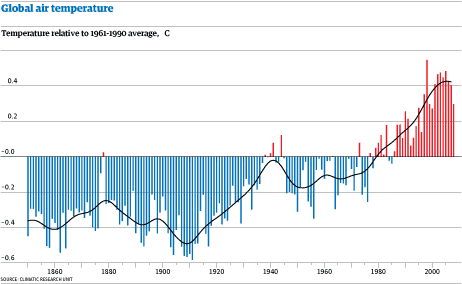A good article on optimal gas taxes is "Does Britain or the United
States Have the Right Gasoline Tax?" Ian W. H. Parry and Kenneth A.
Small, The American Economic Review, Vol. 95, No. 4 (Sep.,
2005), pp. 1276-1289. In 2000, taxes were $2.80/gallon in the UK and
$.40/gallon in the USA. They should have been $1.34 and $1.01, in
light of congestion, accidents, and Ramsey taxation (with minor
contributions from pollution and CO2).
Wikipedia says
taxes are $5.20/gallon in the UK, $.47/gallon in the US, $7.61 in
Germany, It is important to include value-added tax, which is done in
those figures.
The Inst. for Fiscal
Studies, more reliable, gives the fuel duty plus VAT per liter
in pence for different European countries as from 55 in the UK (the
highest) to 24 in Greece (the lowest). Germany is 40; France is 46
(second highest); Italy is 42; Spain is 28.
Thus, it seems Greece and Spain are about at the optimum and all the
other European countries are too high.
Curiously, Parry and Small do not mention one of the major arguments
for a fuel tax: paying for road construction and repair. I seem to
remember that the effect of cars on road deterioration is trivial
(it's all due to trucks), but I might be wrong on that, and it seems
as if it has to be wrong for city streets.
Parry and Small point out that a gas tax is poorly designed for
controlling congestion and accidents, since it is lower for fuel-
efficient cars. Also, as implemented, it is invariant across
locations, which vary tremendously in the cost from congestion,
accidents, and pollution. They calculate the optimal per-mile tax,
which does better. That is hard to enforce, though, since if the tax
became high, odometer fraud would become common. (Maybe it could be
based on how many miles you live from work, though, and age and sex,
as insurance rates are.)
What might work better would be to increase the vehicle registation
tax, or to at least base the per-mile tax on where the vehicle is
registered. Or, we might combine a gasoline tax with a registration
fee based on the vehicle's fuel-efficiency, fuel-efficient cars
paying a bigger registration fee since they pay a lower gasoline tax
per mile travelled.
In practice, I think, hybrids and suchlike are actually subsidized by
the government rather than taxed more heavily. What Parry and Small
show is that that hybrids would be driven too much, given that they
cause accidents just as much as other cars.
In view of the importance of accidents as an externality, I'd like to
see that explored more (maybe it is in the paper; I didn't read
carefully). A big car is safer for the occupants, but more dangerous
to other cars. So it seems, since the effect on other cars is the
externality, that big cars should be taxed more.
Parry and Small find the optimal global warming tax to be very
small, even using liberal estimates of the effect on global warming
and the cost of it. It seems that European countries are emitting too
little CO2 from cars, not too much. That result should be publicized.
The conclusion is true even if other countries such as the US and
China are emitting too much CO2, I think. The cost estimates of the
Stern Report and others are based on "business as usual", which means
that the marginal benefit to the world from the UK from increasing or
reducing emissions is based on other countries' not changing their
current policies. Thus, from the point of view of treating all
countries neutrally rather than favoring some at the expense of
others, the UK ought to emit more carbon dioxide.
Labels: Economics, global warming

![]()
![]()
 I also came across NASA's page on
I also came across NASA's page on 
